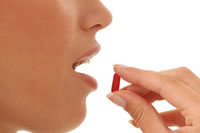Types of Laxatives
 Laxatives act through various mechanisms to induce the passage of stool through the intestinal tract and cause a bowel movement. They are not intended to replace a normal bowel motion and great care should be taken when using any form of laxative not to overuse or abuse them. Most laxatives can make you dependent. They are designed for short term use only, except for natural psyllium husks. Diet and Lifestyle must be addressed in any case of constipation. Laxatives are not the answer to this common problem!
Laxatives act through various mechanisms to induce the passage of stool through the intestinal tract and cause a bowel movement. They are not intended to replace a normal bowel motion and great care should be taken when using any form of laxative not to overuse or abuse them. Most laxatives can make you dependent. They are designed for short term use only, except for natural psyllium husks. Diet and Lifestyle must be addressed in any case of constipation. Laxatives are not the answer to this common problem!
Laxatives can be divided into groups based on composition and how they act. Here is a basic review:
Bulk-Producing Laxatives
Accomplish their action by absorbing water in the intestinal tract, swelling, and forming soft, bulky stool. This stimulates the bowel to pass the stool in a normal manner.
Bulk laxatives include:
- malt soup extract (eg Maltsoupex)
- malt soup extract and psyllium (eg Senokot)
- methylcellulose psyllium (eg Citrual)
- polycarbophil psyllium (eg Equalactin)
- hydrophilic mucilloid psyllium (eg Fibreall)
- hydrophilic mucilloid and carboxymethylcelluose (eg Serutan)
Psyllium hydrophilic mucilloid and polycarbophil"s water and bile salt binding capacity may result in fewer and bulkier stools. Psyllium hydrophilic mucilloid has an antihyperlipidemic effect.
It decreases serum total cholesterol, low-density lipoprotein (LDL) cholesterol, and the ratio of LDL cholesterol to high-density lipoprotein (HDL) cholesterol. Although exact mechanism of psyllium's antihyperlipidemic effect is not known, it is believed that psyllium increases bile acid secretion, thus draining cholesterol products from the body.
Hyperosmotic Laxatives
Hyperosmotic Laxatives pull water into the bowel from surrounding tissues. These form both a soft stool and also stimulate bowel action. This group can be further divided into saline and lactose type hyperosmotics.
Saline type:
The saline forms are used to rapidly empty the lower intestine and bowel. They produce osmotic effects primarily in the small intestine by drawing water into the intestinal lumen. Fluid accumulation produces distention, which in turn promotes increased peristalsis and bowel evacuation. During the use of saline laxatives, the release of cholecystokinin from the intestinal mucosa may enhance the laxative effect.
Saline laxatives are excellent for the following uses:
- occasional constipation
- before an examination or surgery
- elimination of drugs or foods as a result of overdose or poisoning
Saline laxatives include:
- magnesium citrate (eg Citromag)
- magnesium hydroxide (eg Phillips Milk of Magnesia)
- magnesium oxide (eg Colon Cleanse)
- magnesium sulfate (eg Epsom Salts)
- sodium phosphate (eg Fleet Phospho-soda)
This type of laxative may contain large amounts of sodium (up to 1 gram or more per dose in some preparations).
Lactose type:
The lactose forms produce slower results and may be used to treat chronic constipation. Lactose forms may also be used in certain medical conditions to decrease the amount of ammonia in the blood.
Lactulose (eg. Cholac, Emulose)
Lactulose produces a osmotic effect in colon resulting from biodegradation by colonic bacterial flora into lactic, formic, and acetic acids. Fluid accumulation produces distention, which in turn promotes increased peristalsis and bowel evacuation. It will usually produce its effect within 1 to 2 days.
Laxatives-polymere (eg Mira Lax)
Glycerin:
Attracts water into the stool thereby stimulating rectal contraction; also, lubricates and softens inspissated faecal mass.
Lubricant Laxatives
These aid in the passage of stool by coating the bowel and stool with a waterproof film.
The stool remains soft and moist. The lubricant effect eases passage of contents through the intestines. Emulsification of lubricant tends to enhance its ability to soften stool mass. Lubricant laxatives include mineral oil (eg Fleet Mineral Oil). Or a mixture of Milk of Magnesium and mineral oil (eg Haley's MO).
Stimulant-Producing Laxatives
Stimulant laxatives act on the bowel wall to stimulate (peristalsis) stool passage. They also have been shown to promote fluid and ion accumulation in the colon (castor oil acts on the small intestine) to increase the laxative effect.
Dehydrocholic acid, a stimulant laxative, may be used to treat certain biliary tract conditions.
Stimulant laxatives include:
- bisacodyl (eg Bisacolax, Correctol)
- casanthranol (eg Black Drought)
- cascara sagrada
- cascara sagrada and aloe
- cascara sagrada and phenolphthalein
- castor oil
- dehydrocholic (eg Bilax, Neolax)
- phenolphthalein (eg Correctol, Medilax)
- senna (eg Herbal Lax)
- sennosides (eg Sennokot, Nature's Remedy)
Stool Softeners
Stool softeners are used to help mix liquids into the stool to prevent the stool from becoming hard, dry, and difficult to pass. This type of laxative allows a person to have a bowel movement without straining.
Stool softeners include:
- docusate (eg Colace,Diocto)
- alaxin poloxalkol (eg. poloxamer 188)
Suppositories
Suppositories are usually stool softeners
Carbon dioxide releasing suppositories:
Carbon dioxide releasing laxatives form gas that pushes the intestinal wall, stimulating contractions that move the stool. Carbon dioxide released from combined potassium bitartrate and sodium bicarbonate induces gentle pressure in the rectum, thus promoting bowel movement.
This type includes:
- potassium bitartrate, Cream of Tartar (eg. Ceo Two)
- sodium bicarbonate, Baking Soda (eg Docusate)
Combinations of the above are also available to take advantage of the individual properties of the individual ingredients.
